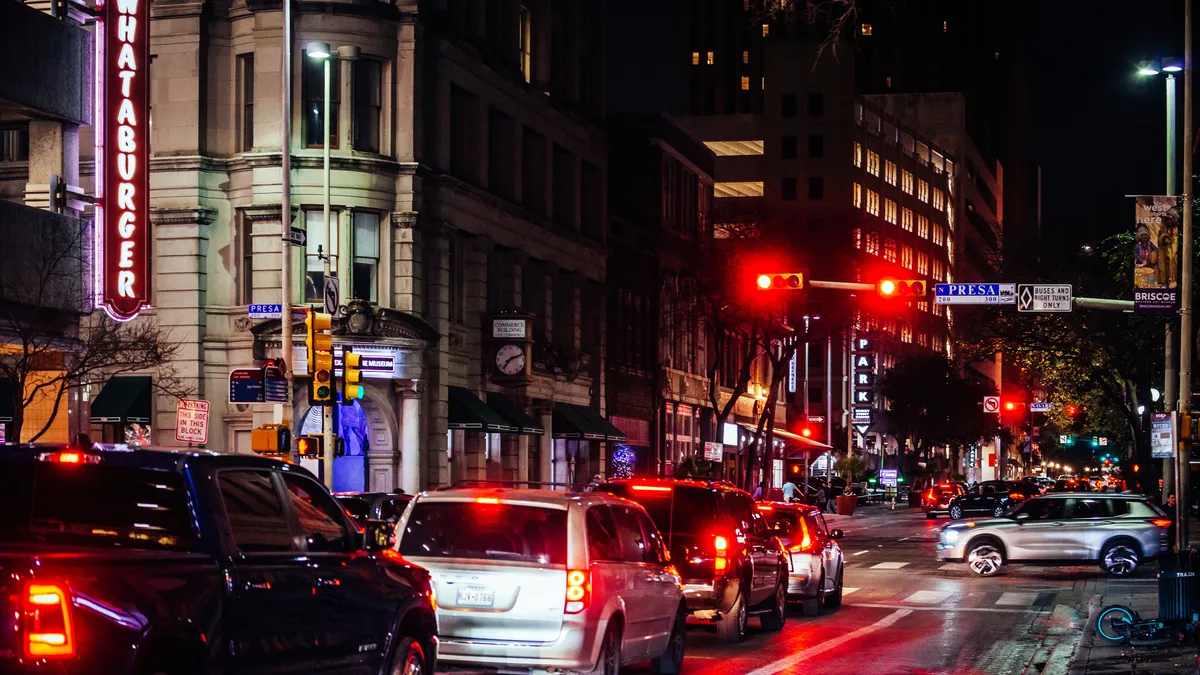In the bustling streets of American cities, a decades-old traffic rule is sparking new debates: the right turn on red (RTOR). Instituted in the 1970s during the energy crisis to save fuel and reduce congestion, the rule allows drivers to turn right at a red light after stopping, provided no oncoming traffic or pedestrians are in the way. While it’s been hailed as a time-saving convenience, critics argue that its safety implications warrant a closer examination.
The conversation surrounding RTOR has grown louder in recent years as cities prioritize pedestrian safety and work toward Vision Zero, a global initiative to eliminate traffic-related fatalities. This debate pits two priorities against each other—convenience for drivers versus safety for vulnerable road users such as pedestrians and cyclists.
A Rule Born from Crisis
The federal government’s adoption of RTOR traces back to the 1970s oil embargo, when saving fuel was a national priority. According to the U.S. Department of Transportation (DOT), studies at the time suggested that allowing vehicles to turn right on red reduced idling, thereby conserving fuel and easing traffic congestion. By 1980, every state except for one (New York) had adopted the rule.
Proponents of RTOR point to its benefits in maintaining traffic flow. “Allowing right turns on red lights reduces wait times at intersections, saving drivers valuable time and cutting unnecessary emissions,” says Tom Mitchell, a civil engineer specializing in traffic systems. “In an era of increasing urban sprawl, this efficiency can’t be overstated.”
But over the years, concerns have mounted about the unintended consequences of RTOR, particularly in urban areas where dense populations of pedestrians and cyclists often share the road with vehicles.
The Safety Argument
For critics, the safety risks associated with RTOR far outweigh its benefits. Data from the National Highway Traffic Safety Administration (NHTSA) reveals that pedestrian fatalities have increased by 19% over the past decade, with a significant percentage occurring at intersections.
Pedestrians and cyclists are disproportionately affected by vehicles turning right on red. Drivers often fail to come to a complete stop, a legal requirement before making the turn. Worse, many drivers focus solely on oncoming traffic to their left, ignoring pedestrians who may be crossing from the right.
“Intersections are already among the most dangerous parts of our roads,” says Michelle Herrera, a traffic safety advocate and member of Vision Zero Chicago. “When drivers are allowed to turn on red, the likelihood of a collision skyrockets, particularly for children, seniors, and people with disabilities.”
Research backs her claims. A study from the Insurance Institute for Highway Safety (IIHS) found that RTOR increases the risk of pedestrian crashes by as much as 69% at urban intersections. With pedestrian and cyclist advocacy gaining momentum, some cities have started reconsidering their RTOR policies.
Cities Taking Action
A growing number of municipalities are imposing restrictions or outright bans on RTOR in the name of safety. Washington, D.C., recently announced a citywide ban on RTOR as part of its Vision Zero strategy. Similarly, New York City, which has largely prohibited RTOR since its inception, credits the restriction as one reason behind its lower pedestrian fatality rates compared to other large cities.
Portland, Oregon, is exploring similar measures. “As we aim to design streets for people rather than just cars, limiting right turns on red is an essential step,” says Laura Foster, a transportation planner in Portland.
On the other hand, critics of such bans argue that they may lead to unintended consequences. Opponents point to increased congestion and driver frustration as potential drawbacks, especially in cities already grappling with traffic gridlock.
“Banning right turns on red could lead to longer commutes and more emissions from idling vehicles,” says Robert Kemp, a representative from a national drivers’ advocacy group. “It’s important to find a balanced approach that considers both safety and mobility.”
Balancing Safety and Convenience
The debate highlights a broader question about who America’s streets are designed for—drivers or everyone else. While pedestrian fatalities have risen sharply, car-centric policies remain deeply embedded in the country’s infrastructure.
Advocates suggest that a compromise might be possible. Adding “No Turn on Red” signs at intersections with heavy pedestrian traffic could target high-risk areas without imposing blanket bans. Improved driver education and stricter enforcement of complete stops before turning could also help mitigate risks.
Some cities are taking innovative approaches to address the issue. San Francisco, for example, has adopted leading pedestrian intervals (LPIs), which give pedestrians a head start of a few seconds to cross before vehicles are allowed to move. LPIs have been shown to reduce pedestrian-vehicle collisions by as much as 60%, according to the Federal Highway Administration (FHWA).
The Road Ahead
As urban centers grow denser and traffic fatalities rise, the debate over RTOR reflects a broader reckoning about how cities should evolve to prioritize safety. The convenience of turning right on red may have made sense in a car-centric past, but it’s clear that modern realities demand a fresh perspective.
Cities like Washington, D.C., and Portland are leading the way in rethinking RTOR, and their success—or failure—could set the tone for the rest of the country. Ultimately, the question comes down to this: How much risk are we willing to accept in the name of convenience?
As municipalities navigate this complex issue, one thing remains certain—America’s streets are at a crossroads. The path chosen will determine not only how we get from point A to point B, but also how safe the journey will be for everyone who shares the road.
Disclaimer – Our team has carefully fact-checked this article to make sure it’s accurate and free from any misinformation. We’re dedicated to keeping our content honest and reliable for our readers.








